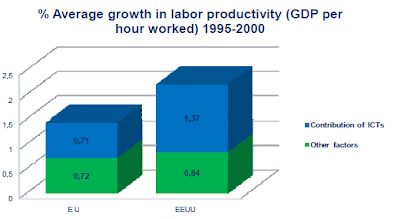Mixtape mecca and openair piracy expo Megaupload has a serious problem: it's just been shut down by the feds. The feds. And they didn't even need SOPA!
The federal indictment accuses Megaupload—which shocked the internet with the revelation that rap producer Swizz Beatz is for some reason its CEO—of over $500 million in lost media revenue from hosting pirated media. They had quite a run, though! Megaupload boasted "more than 150 million registered users, 50 million daily visitors and accounting for four percent of the total traffic on the Internet," according to the DoJ. And some famous friends.
Lucky for us, there are plenty of alternatives to Megaupload. And luckily for Swizz Beatz, he's still a super-successful rap producer, an NYU professor, and Alicia Keys' husband. Not so lucky? The crazily named MP3 baron and Megaupload founder Kim "Dotcom" Schlitz who is now in the slammer awaiting prosecution. Dotcom's had a busy past few years, racking up up embezzlement charges, multiple arrests, a lardy face, and most recently, ownership of one of New Zealand's most fabulous houses.
Let's also think about the timing of this bust. It's a pretty spectacular coincidence that the Department of Justice Task Force on Intellectual Property was able to destroy a copyright villain without any help from SOPA or PIPA the day after the internet's giant SOPA protest. Do you hear that, lawmakers? The law, as it stands right now was able to kill Megaupload.com, no draconian censorship powers required. The power you have now—with due process—is achieving the things you say you want to do. Your IP is protected. Online piracy was stopped, except for the dozens of Megaupload rivals like HulkShare and MediaFire. And I wouldn't be surprised if they're next. [AP]
Update: The WSJ says seven Megaupload employees are under arrest, with four already locked down—four of them in New Zealand! No word if one of them is Swizzy himself.
Update 2: As of 13 hours ago on Twitter, Mr. Beatz did not seem to give a shit about anything.
Update 3: The AP reports the following statement from Megaupload: "The fact is that the vast majority of Mega's Internet traffic is legitimate, and we are here to stay. If the content industry would like to take advantage of our popularity, we are happy to enter into a dialogue. We have some good ideas. Please get in touch."Well, not really, no.
Update 4: The Department of Justice has issued a gleeful statement regarding the takedown, coordinated with police around the world, calling it "among the largest criminal copyright cases ever brought by the United States," and listed the individual charged with "racketeering conspiracy, conspiring to commit copyright infringement, conspiring to commit money laundering and two substantive counts of criminal copyright infringement."
Update 5: The Next Web shares the the full 72 page indictment. That's a lot of indictment.
Mega Indictment of Megaupload
Source: Gizmodo.com
The federal indictment accuses Megaupload—which shocked the internet with the revelation that rap producer Swizz Beatz is for some reason its CEO—of over $500 million in lost media revenue from hosting pirated media. They had quite a run, though! Megaupload boasted "more than 150 million registered users, 50 million daily visitors and accounting for four percent of the total traffic on the Internet," according to the DoJ. And some famous friends.
Lucky for us, there are plenty of alternatives to Megaupload. And luckily for Swizz Beatz, he's still a super-successful rap producer, an NYU professor, and Alicia Keys' husband. Not so lucky? The crazily named MP3 baron and Megaupload founder Kim "Dotcom" Schlitz who is now in the slammer awaiting prosecution. Dotcom's had a busy past few years, racking up up embezzlement charges, multiple arrests, a lardy face, and most recently, ownership of one of New Zealand's most fabulous houses.
Let's also think about the timing of this bust. It's a pretty spectacular coincidence that the Department of Justice Task Force on Intellectual Property was able to destroy a copyright villain without any help from SOPA or PIPA the day after the internet's giant SOPA protest. Do you hear that, lawmakers? The law, as it stands right now was able to kill Megaupload.com, no draconian censorship powers required. The power you have now—with due process—is achieving the things you say you want to do. Your IP is protected. Online piracy was stopped, except for the dozens of Megaupload rivals like HulkShare and MediaFire. And I wouldn't be surprised if they're next. [AP]
Update: The WSJ says seven Megaupload employees are under arrest, with four already locked down—four of them in New Zealand! No word if one of them is Swizzy himself.
Update 2: As of 13 hours ago on Twitter, Mr. Beatz did not seem to give a shit about anything.
Update 3: The AP reports the following statement from Megaupload: "The fact is that the vast majority of Mega's Internet traffic is legitimate, and we are here to stay. If the content industry would like to take advantage of our popularity, we are happy to enter into a dialogue. We have some good ideas. Please get in touch."Well, not really, no.
Update 4: The Department of Justice has issued a gleeful statement regarding the takedown, coordinated with police around the world, calling it "among the largest criminal copyright cases ever brought by the United States," and listed the individual charged with "racketeering conspiracy, conspiring to commit copyright infringement, conspiring to commit money laundering and two substantive counts of criminal copyright infringement."
Update 5: The Next Web shares the the full 72 page indictment. That's a lot of indictment.
Mega Indictment of Megaupload
Source: Gizmodo.com
















